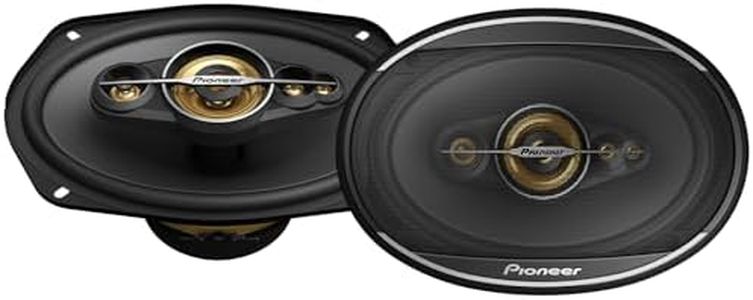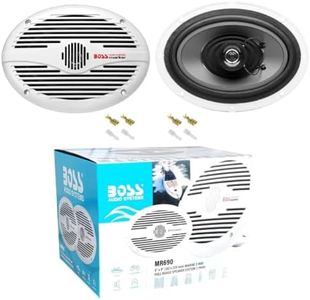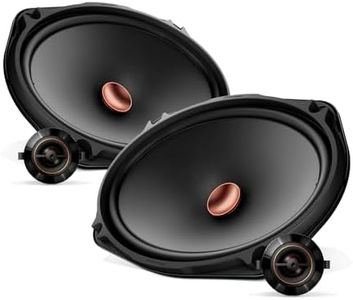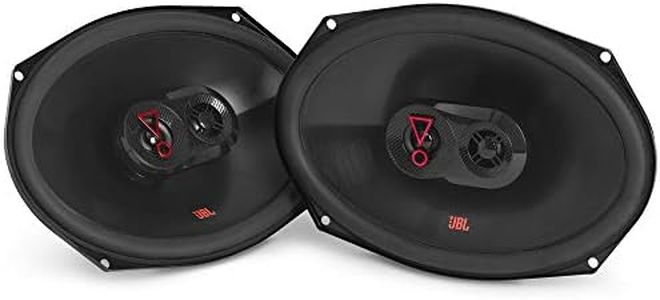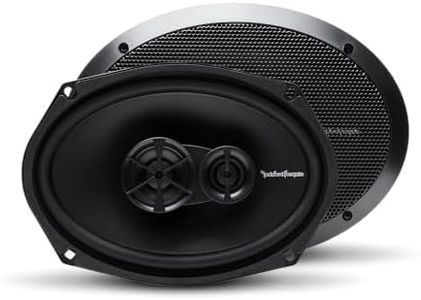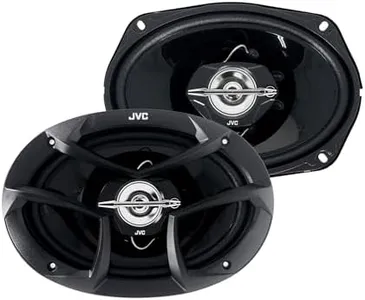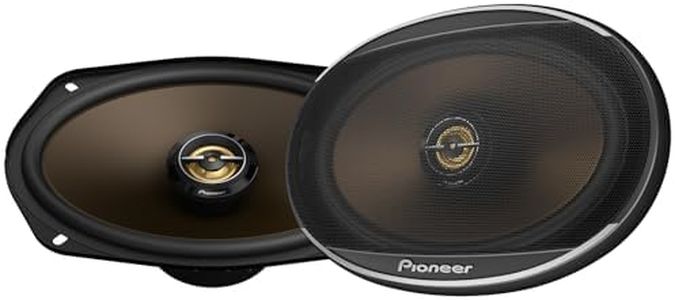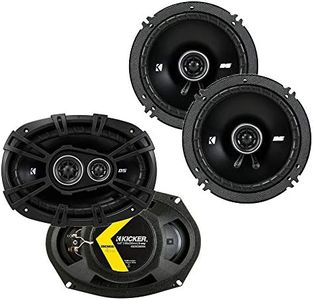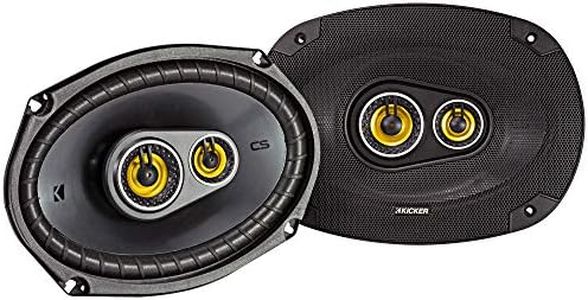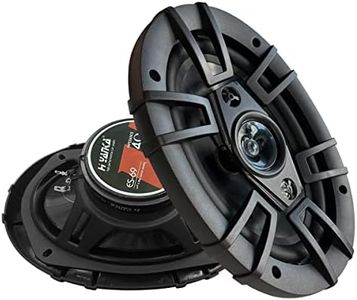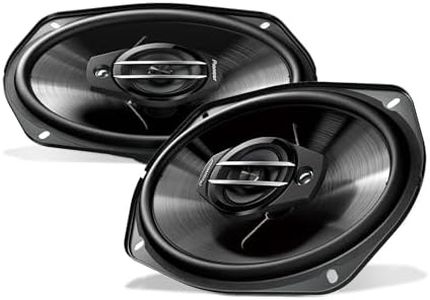We Use CookiesWe use cookies to enhance the security, performance,
functionality and for analytical and promotional activities. By continuing to browse this site you
are agreeing to our privacy policy
10 Best 6x9 Speakers
From leading brands and best sellers available on the web.Buying Guide for the Best 6x9 Speakers
Choosing the right 6x9 speakers for your car or home audio system can make a big difference in your listening experience. The right pair should fit your vehicle or setup, match your preferred music style, and work well with your other audio equipment. It's important to think about how you plan to use them: Are you looking for more bass, clearer vocals, or an all-around upgrade from the built-in speakers? Knowing these goals will help you focus on what's important as you look through the options.Power Handling (Wattage)Power handling tells you how much electrical power (in watts) your speakers can handle safely, both at continuous (RMS) and peak levels. This matters because speakers that can't handle enough power may distort at high volumes or even get damaged. Typically, RMS power is a better measure than peak, since it's about ongoing performance. Lower RMS values (30–50W) are suitable for basic radio and casual listening, while mid-range (50–100W) fits moderate volume and better quality. High RMS (100W or more) is best if you use external amplifiers, want loud sound, or listen to music with powerful bass. Match your power needs to your music style and your amplifier’s output.
SensitivitySensitivity measures how efficiently a speaker turns power into sound, usually shown in decibels (dB). A higher sensitivity rating means the speaker will play louder at a given power level. Speakers with lower sensitivity (less than 87dB) may require a strong amplifier, while those with higher sensitivity (90dB or more) are good for use with a standard head unit or low-powered stereo. Choose higher sensitivity if you want louder sound without extra amplification, and lower sensitivity if you have a powerful amp and prioritize sound quality.
Frequency ResponseFrequency response shows the range of sounds (from low bass to high treble) a speaker can produce, usually measured in Hertz (Hz). A wider frequency response (for example, 40Hz–20kHz) means the speaker can reproduce deeper bass and clearer highs. If you like heavy bass, look for speakers that go lower in the range, but remember most 6x9s can't match subwoofers. For general or vocal-heavy music, most standard frequency ranges will be sufficient. Match the response to the type of music you listen to and whether you’ll pair the speakers with other equipment like a subwoofer.
Speaker Configuration (2-way, 3-way, etc.)Speaker configuration refers to how many separate drivers or parts the speaker has for handling different types of sound. A 2-way speaker has a woofer and a tweeter for bass and treble, while a 3-way adds a midrange driver for even clearer sound details. 2-way speakers are good for balanced everyday listening and upgrades. 3-way (or more) can offer better clarity and separation, especially for music with a lot of instruments. Pick a configuration that matches the level of sound detail you want and how much space you have for installation.
Build Quality & MaterialsThe materials used in the speaker’s construction affect durability and sound. Look for woofers made from tough yet responsive materials like polypropylene or woven fabrics, and tweeters made from soft fabrics or hard materials like silk or metal for different sound signatures. Materials matter if your speakers will be exposed to heat, humidity, or intense use. Choose stronger materials for harsh environments or long-term reliability, and focus on quality if you care about richer, more detailed sound.
Size & FitEven within the 6x9 category, actual dimensions can vary slightly, and mounting depth can be important, especially in vehicles. Make sure the speakers will fit easily into the available space, factoring in grills and any extra mounting equipment. If you’re replacing factory speakers, double-check the fit to avoid installation headaches. Let the amount of space and ease of installation guide your choice here.

